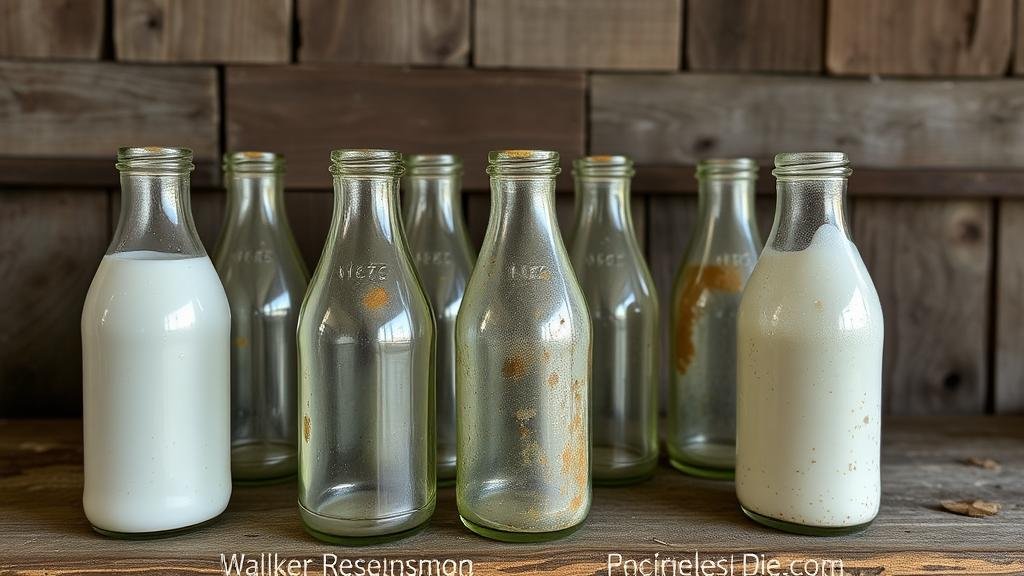Recovering Vintage Milk Bottles in Abandoned Dairies
Recovering Vintage Milk Bottles in Abandoned Dairies
The fascination with vintage milk bottles lies not only in their aesthetic value but also in their historical significance. As businesses, dairies played a vital role in communities, providing fresh milk to households before the advent of modern refrigeration and packaging. This article explores the process of recovering vintage milk bottles from abandoned dairies, delving into the methods, motivations, and implications of such endeavors.
The Historical Context of Milk Bottles
Milk was traditionally delivered in bulk, but as urbanization increased, the need for convenient and hygienic packaging grew. Glass bottles became the primary means of delivering milk in the early 1900s. These bottles often featured embossed logos, unique shapes, and various sizes, reflecting the branding strategies of local dairies. Understanding this context is crucial when embarking on the recovery of vintage bottles, as it informs collectors and enthusiasts about the cultural and economic landscape of the time.
Reasons for Recovering Vintage Milk Bottles
There are several motivations behind the recovery of vintage milk bottles from abandoned dairies:
- Collecting: Many enthusiasts seek vintage milk bottles to complete collections or display them as decorative items.
- Historical Preservation: Recovering these artifacts contributes to preserving local history and the legacy of the dairy industry.
- Art and Craft: Artists often use vintage bottles in creative projects, incorporating them into contemporary art installations or repurposing them as functional items.
Methodological Approaches to Recovery
Recovering vintage milk bottles involves a systematic approach, ensuring that the process is respectful of the site and its history. Here are the key steps:
1. Research and Site Selection
Before embarking on a recovery mission, it is essential to conduct thorough research. This may include reviewing historical records, local archives, and databases to identify abandoned dairies. For example, the online resources of local historical societies often provide valuable information on the locations and histories of dairies in a specific area.
2. Permission and Legal Considerations
Many sites are private property, and obtaining permission is vital. Contacting property owners or local authorities is a must to avoid legal repercussions. Also, familiarizing oneself with local laws regarding archaeological finds or artifacts in abandoned settings is pragmatic.
3. Excavation Techniques
Careful excavation is essential to prevent damage to the bottles. Techniques can include:
- Shovel Testing: This involves digging small test holes to locate buried bottles without extensive digging.
- Screening: Soil may be screened to find smaller pieces of glass that could indicate the presence of vintage bottles.
Case Studies: Successful Recoveries
Many successful vintage milk bottle recoveries have highlighted the significance of preservation efforts:
- The Chester County Milk Bottle Recovery: In 2015, a group of local historians recovered over 200 milk bottles from an abandoned dairy in Pennsylvania. bottles, dating back to the 1920s, were meticulously restored and are now featured in a local museum exhibit focused on dairy history.
- The Wisconsin Dairies Project: An ongoing initiative that has identified several abandoned dairies in the Midwest, resulting in the recovery of vintage bottles that have been used in educational programs to teach children about historical food production methods.
Challenges and Considerations
Recovering vintage milk bottles is not without its challenges. Potential concerns include:
- Safety Hazards: Abandoned dairies can present safety risks, including unstable structures and hazardous materials.
- Environmental Factors: Exposure to the elements can lead to deterioration of the bottles, making recovery more complicated.
Conclusion: The Future of Vintage Milk Bottle Recovery
The recovery of vintage milk bottles is not just a hobby; it is a gateway to understanding the past and preserving it for future generations. By meticulously researching, obtaining necessary permissions, and employing careful excavation techniques, collectors and historians can rescue these artifacts from obscurity. As the world continues to evolve, the stories embedded in each glass bottle remain vital, connecting communities to their agricultural roots.
For those interested in pursuing this endeavor, remember to prioritize responsible collection practices and consider the interplay of history, culture, and environmental stewardship. Engaging in vintage milk bottle recovery is not only about the thrill of the find; it is about honoring the legacy of the dairy industry and ensuring its stories are told for years to come.


